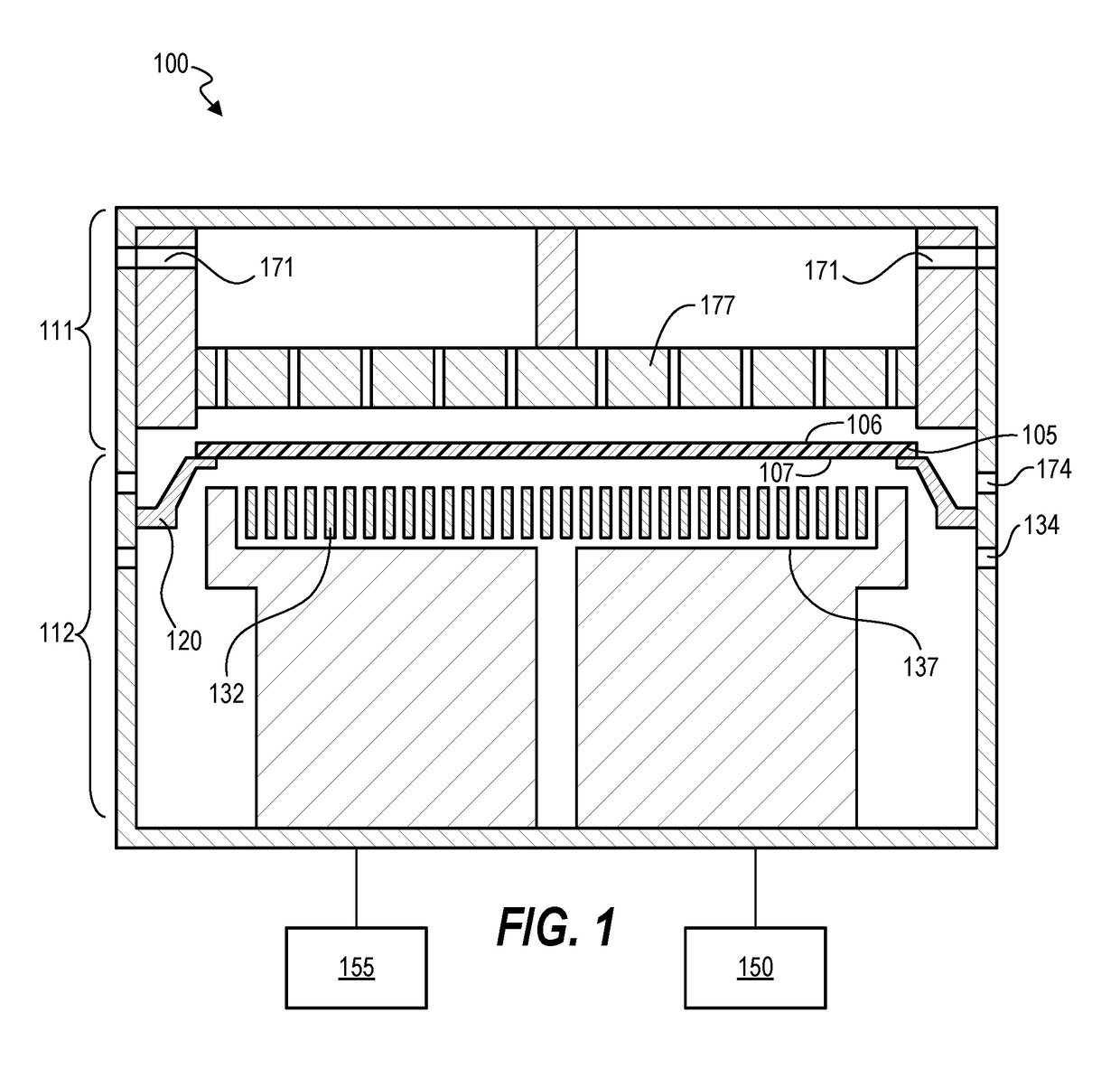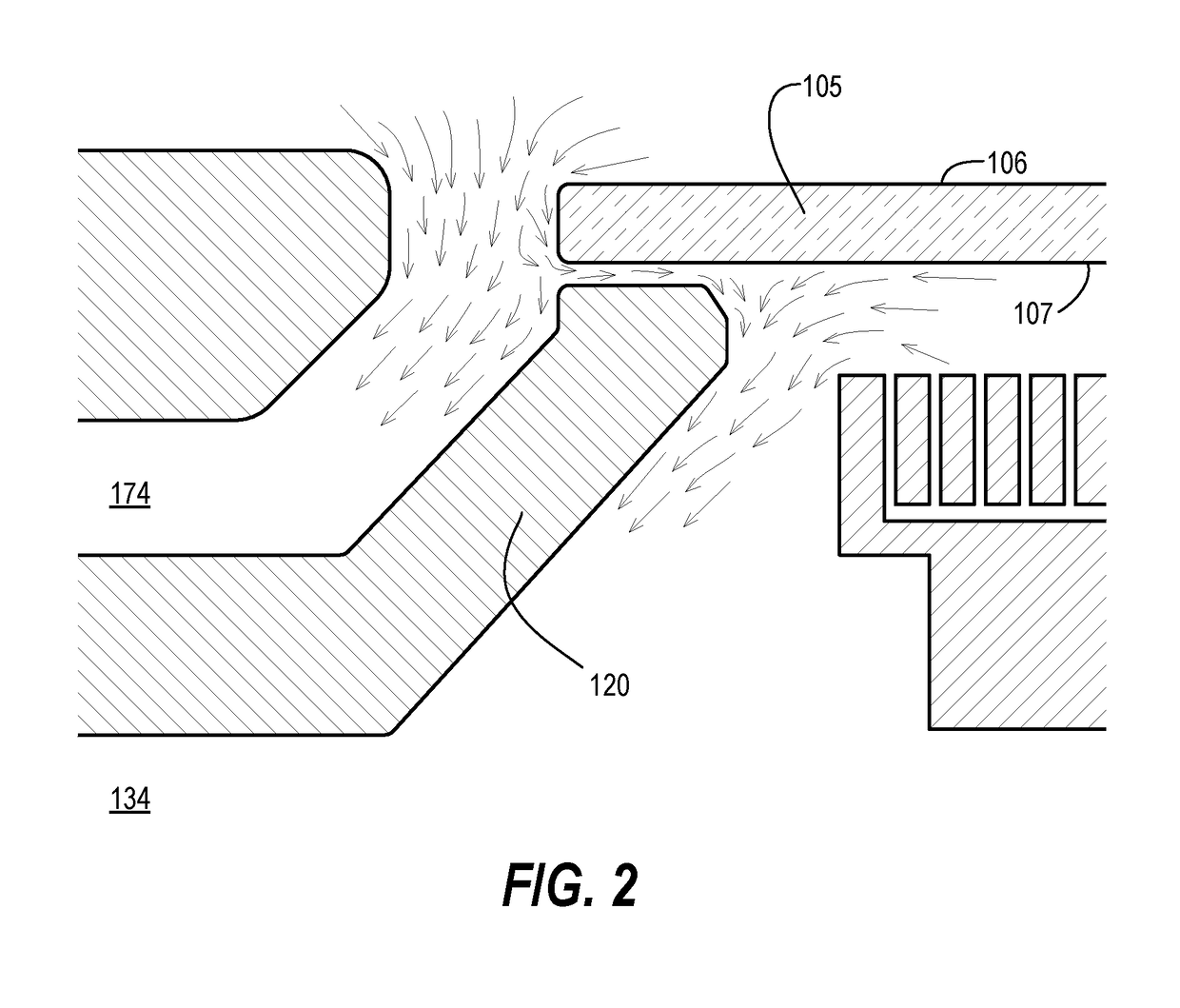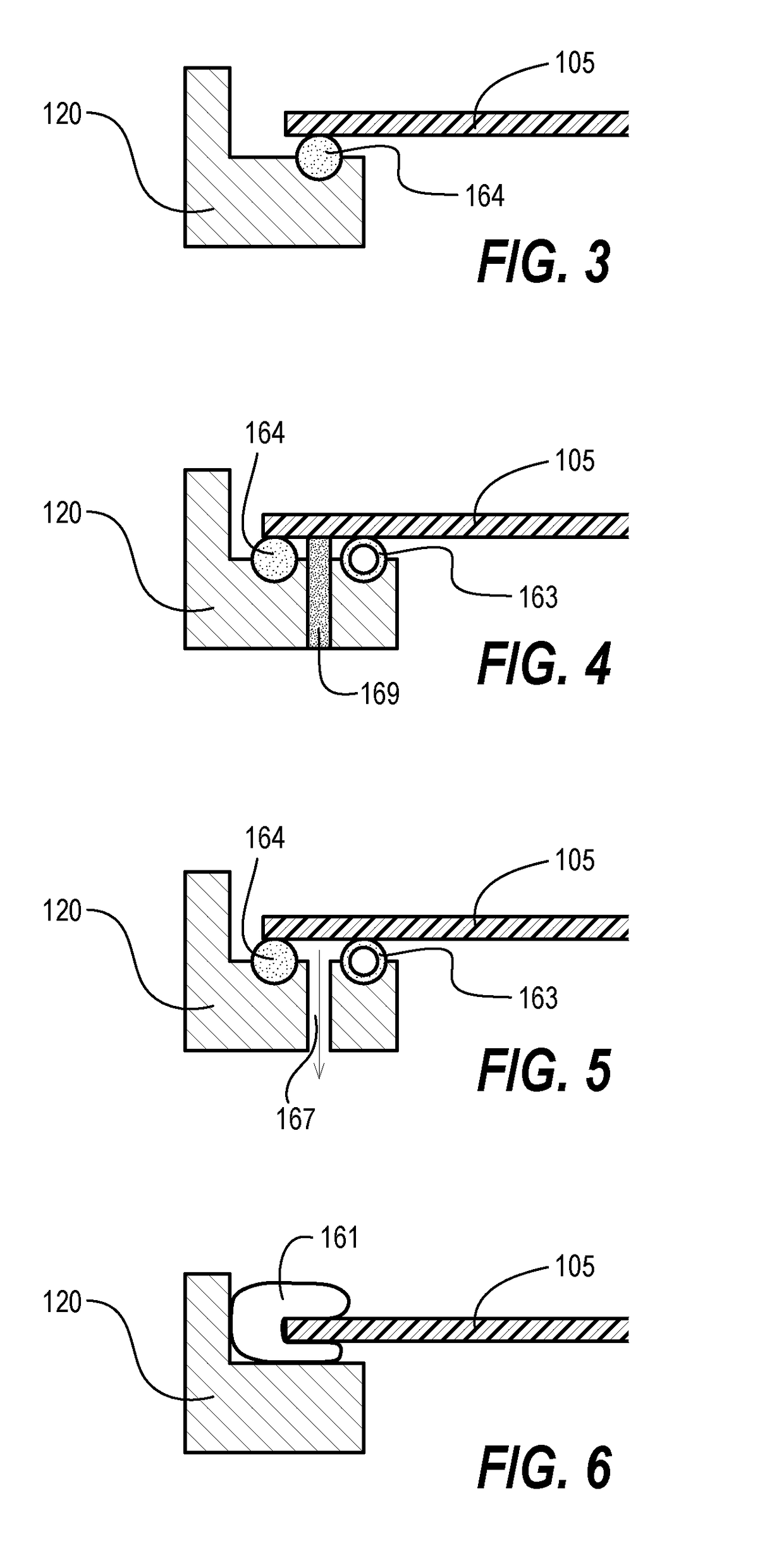System and method for backside deposition of a substrate
a substrate and backside deposition technology, applied in the field of semiconductor fabrication, can solve the problems of increasing the surface stress of the wafer, reducing the size uniformity of critical features across the surface of the wafer, and new challenges for successful micro-fabrication, so as to reduce the size of features, increase the density of the device, and reduce the flatness of the wafer
- Summary
- Abstract
- Description
- Claims
- Application Information
AI Technical Summary
Benefits of technology
Problems solved by technology
Method used
Image
Examples
Embodiment Construction
[0021]Techniques herein include a process chamber for application of thin films to backside surfaces of semiconductor substrates for the elimination or reduction of substrate flatness distortion. In other words, systems herein help make a bowed wafer flat by depositing films on the backside surfaces of wafers. The process chamber herein includes a substrate support that provides an annular perimeter seal around the bottom and / or side of the substrate which allows the majority of the substrate backside to be exposed to a process environment. One of various means of clamping and sealing the substrate can be selected. When the substrate creates a seal, the chamber is essentially bifurcated into lower and upper chambers or sections which are separate and distinct in terms of process environment. The lower section of the processing chamber includes deposition hardware configured to apply and remove thin films. The deposition hardware can be any of various types including chemical vapor d...
PUM
| Property | Measurement | Unit |
|---|---|---|
| Pressure | aaaaa | aaaaa |
| Flow rate | aaaaa | aaaaa |
| Height | aaaaa | aaaaa |
Abstract
Description
Claims
Application Information
 Login to View More
Login to View More - R&D
- Intellectual Property
- Life Sciences
- Materials
- Tech Scout
- Unparalleled Data Quality
- Higher Quality Content
- 60% Fewer Hallucinations
Browse by: Latest US Patents, China's latest patents, Technical Efficacy Thesaurus, Application Domain, Technology Topic, Popular Technical Reports.
© 2025 PatSnap. All rights reserved.Legal|Privacy policy|Modern Slavery Act Transparency Statement|Sitemap|About US| Contact US: help@patsnap.com



